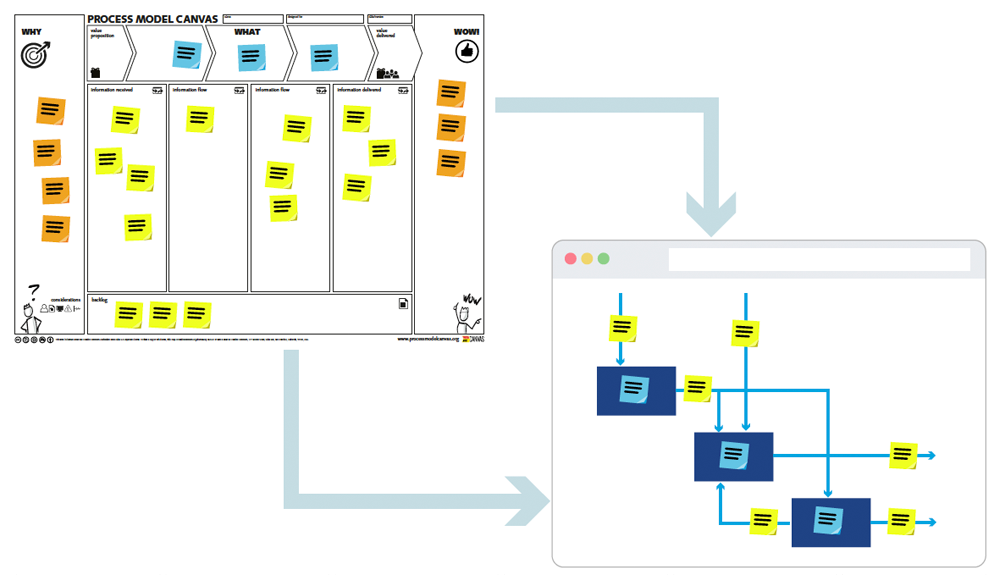ISO 9001: Six causes that make your quality management system not vivid
A quality management system is indispensable in most organizations today. Yet many companies struggle with keeping the quality management system vivid within their organization.
Colleagues new to the organization quickly realize that the quality management system is not working as it should. Employees have their "own ways" of carrying out certain processes. If you have questions, you are told that it is better to consult a colleague than to review the documentation.
The quality management system exists only on paper and is not applied in daily work.
In this article, we look at some of the most common problems that prevent the quality management system from really thriving in the organization, and how to address them.
Cause 1: The quality management system is used purely to control employees
Using the quality management system as a school-based method for management to monitor and hold employees accountable is old-fashioned and may even backfire.
The purpose of a quality management system is to promote understanding and cooperation in an organization so that everyone works together to achieve common goals. This cannot be achieved if colleagues see the system only as a way for management to keep an eye on them.
How to solve this?
Precisely by giving your colleagues creative freedom and trust, you will create a more committed team that is actually willing to contribute to the quality management system. Of course, this does not take away from the fact that agreements must be kept, but this does not have to be the sole purpose of the quality management system.
Take, for example, one of the quality principles of ISO 9001: customer focus. The goal of your quality management system is to deliver the best quality and highest value for customers. And you get that quality by inviting your colleagues to take a critical look at the existing quality processes and systems themselves, and work with them to make improvements.
Use the quality management system as a tool for improvement, not for control.
Cause 2: The quality management system is only used to meet external requirements
The quality management system should not be seen as a box to be checked off every year in order to meet external requirements as set by customers, legislation or ISO 9001. With that approach, the quality management system is seen as an obstacle instead of an opportunity.
How to solve this?
A quality management system is an investment that can really pay off, but only if it is used with the right intention. A quality management system that only meets external requirements will never lead to the best possible outcome for your organization.
If you already have it as part of your organization, use it intelligently. Use it for its intended purpose: to guarantee quality and improve it wherever possible. That leads to happier customers and a more successful company.
Cause 3: The quality management system from IT does not align with existing practices or systems
Sometimes we see that processes or methods within a quality management system are created with an IT mindset. This can be caused by processes being digitized, and it is then taken for granted that ownership lies with the IT department.
As a result, the management system does not match the users' needs. The IT department then comes up with an overly detailed schematic that only creates confusion. Or the project is overall misaligned with the existing and intended practices of people or systems in the operation.
How to solve this?
Assemble a process team, involving a representative from each stakeholder group. Think here of the implementers, but also the people who will work with the output of the process.
In this way, involve each stakeholder in designing, describing and then digitally storing quality processes in your management system. A useful tool you can use for this is the Process Model Canvas. By working together on process descriptions, you ensure that it is stored correctly in your management system and matches the needs of all stakeholders and existing practices and systems.
Cause 4: The information in the quality management system is outdated
This is a problem we often encounter within organizations. A quality management system with associated processes has been devised and set up, but it is not regularly updated. The result? A loss of confidence in the management system so that it is no longer actively used.
How to solve this?
Assemble a process team consisting of a process owner or leader, a number of process experts and a process developer. The process team is a group of people who work together within an organization to ensure that the processes for which they are responsible are implemented, executed correctly and improved where possible.
The advantage of a process team is that the team will continue to exist as long as the process remains active within the company. Once a new process is fully implemented and accepted within the organization, the process team will ensure that there is continuous improvement in the process. Depending on the complexity of the process, we recommend that the process team meet at least twice a year to evaluate the process, do an internal process audit and update the information in the management system.
At Comm'ant, we have more than 20 years of experience setting up process teams and mapping processes. Over a cup of coffee, our process experts are happy to help with the challenges in your organization! Be sure to contact us.
Cause 5: Managers make their own plans
We have previously written a blog about the process effectiveness formula and the importance of acceptance rates within organizations for the success of a process. In it we explained the importance of everyone within your organization accepting (new) processes. Managers are an essential player in this.
Unfortunately, it happens too often that managers draw their own plans regarding process arrangements. They have found a better way, use different tools, and would rather explain their own process to a new employee than share the proper documents.
This not only causes discrepancies in implementation by different employees or teams, but also means that from the very first moment, the new employee will take the management system and the processes and agreements established in it less seriously.
How to solve this?
Involve process execution managers from the start when designing a new process or mapping an existing one. Their knowledge is incredibly valuable and should not be ignored.
In doing so, remember that process management is a journey, not a destination. It is an ongoing phenomenon, where the effectiveness of the process must be constantly evaluated and improved. It is never finished and there is always room for improvement.
Be sure to include in these evaluation moments all managers who are stakeholders in the process. By doing so, you ensure that the managers feel ownership of the process and that they can contribute to its further development.
Cause 6: "Our processes are our best kept secret"
We still can't believe it, but we regularly talk to companies that don't share their processes in black and white with their employees. Wondering how they operate then?
For example, by assigning a "buddy" to a new employee who explains how the process should be done.
We don't need to explain how much money evaporates as a result - failure costs, knowledge that disappears when an employee leaves and the time it takes in the first place. And also consider the "whisper game" that children play, where a message is passed in a whisper. By the end of the circle, little of the original story often remains.
Why isn't a good process description available within some organizations? It gets lost in the delusion of the day, or the time is not taken to map the processes.
In some cases, not sharing documents is done deliberately - because they believe their best kept secret is their processes. For fear that this knowledge will be copied by potential competitors.
How to solve this?
Start documenting your processes yesterday rather than today with good management software from Comm'ant. With which you record the processes and all relevant control aspects, such as risks and control measures, standards and requirements, performance indicators and work instructions.
Don't make your process a secret. You gain so much by working together on the basis of clear agreements. And are things not going as they should? Then take the process description and start looking for improvement possibilities together.
Conclusion: Revive your quality management system
The quality management system is like a blueprint of a house. It contains all the information necessary to maintain the organization, and if you want to change something, you must first go through the blueprint.
Unfortunately, many organizations forget this after a while and the quality management system becomes a dusty folder on the server that no one ever opens. Yet it's still there, in the background - and often still used as evidence in external audits.
With the tips in this blog, you can ensure that your quality management system becomes an important part of the organization again. And that everyone knows where to find the most important information, by using quality management software from Comm'ant. After all, good housekeeping starts with a well-organized house!






